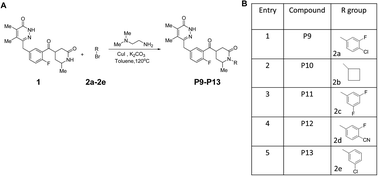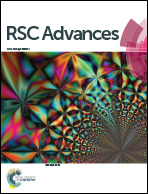Novel PARP inhibitors sensitize human leukemic cells in an endogenous PARP activity dependent manner†
Abstract
Poly(ADP-ribose) polymerase (PARP) is a critical nuclear enzyme which safeguards genome stability from genotoxic insults and helps in DNA repair. Inhibition of PARP results in sustained DNA damage in cancer cells. PARP inhibitors are known to play an important role in chemotherapy as single agents in many DNA repair pathway deficient tumor cells or in combination with several other chemotherapeutic agents. In the present study, we synthesize and characterize novel pyridazine derivatives, and evaluate their potential for use as PARP inhibitors. Results show that pyridazine derivatives inhibited the PARP1 enzymatic activity at the nanomolar range and showed anti-proliferative activity in leukemic cells. Interestingly, human leukemic cell line, Nalm6, in which PARP1 and PARP2 expression as well as intrinsic PARP activity are high, showed significant sensitivity for the novel inhibitors compared to other leukemic cells. Among the inhibitors, P10 showed maximum inhibition of intrinsic PARP activity and inhibited cell proliferation in Nalm6 cells. Besides P10 also showed maximum inhibition against purified PARP1 protein, which was comparable to olaparib in our assays. Newly synthesized compounds also showed remarkable DNA trapping ability, which is a signature feature of many PARP inhibitors. Importantly, P10 also induced late S and G2/M arrest in Nalm6 cells, indicating accumulation of DNA damage. Therefore, we identify P10 as a potential PARP inhibitor, which can be developed as a chemotherapeutic agent.


 Please wait while we load your content...
Please wait while we load your content...